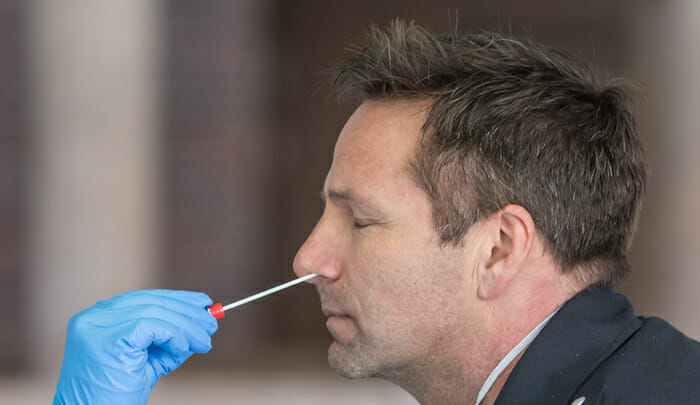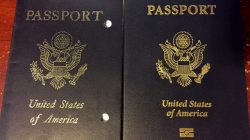I’m about to embark on my first international trip in quite some time. This means figuring out where to get a covid test. Annoying, especially that my wife and I are fully vaccinated. Getting out into the world after a long year will hopefully make up for this. This trip is a long overdue family trip to Europe. Making up for a past trip that was cancelled, using some leftover flight credit and decent fares. This means we are utilizing some old systemwide upgrades on American. Traveling internationally in 2021 is complicated, and the rules change quickly and frequently. I’ve spent far too much time of late try to keep up with changes in border procedures, as well as COVID testing requirements. Hope I can share some of the knowledge I’ve gained along the way.
Our trip to Europe
We bought tickets to Ireland for June 2021, purchased back in 2020, figuring things would open up by then. Very cheap tickets on the American nonstop between Chicago and Dublin. With some travel credit from past cancelled trips, these cost us nothing out of pocket, and I was able to upgrade all legs to business class with systemwide upgrades. Some of these were earned back in 2018, and applied to a trip we planned for mid 2020, since the overwater segments were confirmable at booking. Of course, that trip was cancelled, but I was able to keep the upgrades active.
Eventually American cancelled the nonstops from Chicago to Dublin, and rebooked us via Philadelphia. I generally avoid connecting in Philly when I can, especially on a now even shorter trans-Atlantic flight, so changed the outbound to Chicago to Heathrow with a British Airways connection to Dublin. Later BA cancelled that flight, so I was stuck. Trying to find a way to salvage this trip, and our confirmed upgrades.
Plans change, but we are making it work
At this point, Croatia was already opened to vaccinated travelers, plus dependent children traveling with their parents, so we tried to make this somehow work. After an awesome day trip to Piran, Slovenia, I knew I wanted to explore more places in the Balkans, and Croatia has been high on the list. So we are off to Dubrovnik. The hope is that with no cruise ships and reduced travel from Europe and most everywhere else, that the massive crowds that are becoming common here will not happen for us.

Dubrovnik isn’t that easy to get to, at least in June 2021. Various US carriers are adding flights, but most aren’t until later in the year. Plus, I’m adding this on to our flight into London. I considered going to Athens, as it one of a few European destinations British Airways is flying to in June, plus Greece is open to vaccinated Americans. Unfortunately, the connection time at Heathrow is poor for the one Athens flight that would work. I then discovered the Spain will be open to Americans in early June. So, O’Hare to Madrid via Heathrow preserves our upgrade, and gives us time back in Spain, where we missed out on last year due to the pandemic. This announcement seemed to waiver a bit, but it is now possible for most vaccinated travelers to enter Spain. Our unvaccinated daughter can join us, but will require a COVID test. Since we are transiting Heathrow, my wife and I will have to have a negative test as well, so all 3 of us will get tested before departure and then before returning home.
What kind of COVID test will work for travel?
This is complicated…I have a degree in Biology, and work for a biotech company, and I have some understanding of most of the terminology used. But with differing test types and requirements that differ by country, I feel like I’ve done more homework trying to keep up with these things than I did studying for some of my university classes way back when. Do your research, as requirements are changing quickly, and differ in each location.
Even places that are open to Americans who have been vaccinated (or not…), a negative est is required for all passengers on inbound international flights to the USA. The US is pretty open with the type of test required, either molecular or antigen tests are accepted.
The FDA website has the video above, and some more information about test types, mostly in not overly scientific terms. I’ll attempt to summarize below.
First, some molecular tests:
PCR
PCR is an acronym meaning Polymerase Chain Reaction, subjecting samples to various eating and cooling cycles on a special instrument. These tests are probably the most common, and the most accurate. However, these typically require a longer turn around time, as most are sent to a core lab facility. So, with transit time, can take a few days to get results. PCR is a type of NAAT, Nucleic Acid Amplification Test.
This and other molecular tests detect genetic material from the virus, which indicate an active infection.
Rapid Diagnostic Molecular tests
This is a broader category, with a word salad of acronyms. Please bear with me. You may see LAMP (loop-mediated isothermal amplification) or TMA (transcription mediated amplification). Some of these acronyms are preceded with an RT- with means reverse transcriptase. Since the virus uses RNA for its genetic material, some assays require this to be to be converted to DNA, making it more stable and easier to work with. These tests require less processing, and often can be done with a smaller, more simple device.
Often these machines are bench top instruments, and intended to be used at a Point-of-Care (POC) facility like a clinic or pharmacy. Many Walgreens locations in the US offer a rapid molecular test (ID NOW from Abbott), for free. These tests are administered at a drive thru pharmacy window, with a self collected swab, and testing done in store.
Rapid Antigen Tests
Antigen tests are also diagnostic tests, and instead of looking for nucleic acid material, this tests for specific proteins from the virus. Antigen tests are often fast as well, typically requiring less processing than molecular tests. This often means they are cheaper than molecular tests. Accuracy is typically lower than molecular methods.
All of the above test types are usually collected from a nasal swab, sometimes a front of nose swab, and sometimes deeper in the nasal cavity. Some molecular tests can use saliva samples rather than a nasal swab
Antibody Tests
Antibody tests look for the presence of antibodies, which indicate a past infection. Some Antibody tests also show reactivity to certain markers for who have vaccinated, since the the way vaccines work is the generate the body’s natural antibody response without a prior infection. These tests are typically collected from blood samples. This can be done quickly at the POC or at a core facility which will require more time.
Antibody tests do not detect a current infection, and often aren’t aren’t highly accurate. These aren’t used for travel, although can offer peace of mind for those who are unsure if they have been infected.
Final thoughts
I think there is a lot of pent up demand for travel. I know that definitely the case in our house. While we could stay domestic, or go to Mexico or or somewhere else where testing is not required, that doesn’t seem like much fun. So we are off to Europe. I’ll certainly report back on how our trip goes. We have to get a test before our outbound flights, since we are transiting the United Kingdom. And for the return, we all have to get a test to prove we remain COVID-free before getting back home to the USA. For the outbound, we’ll do ID Now tests at Walgreens, and for the return, rapid antigen tests before we head home. To me, a few moments of feeling like I have to sneeze is worth getting back out into the world again. Safe travels all!






